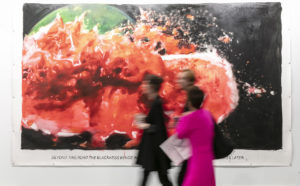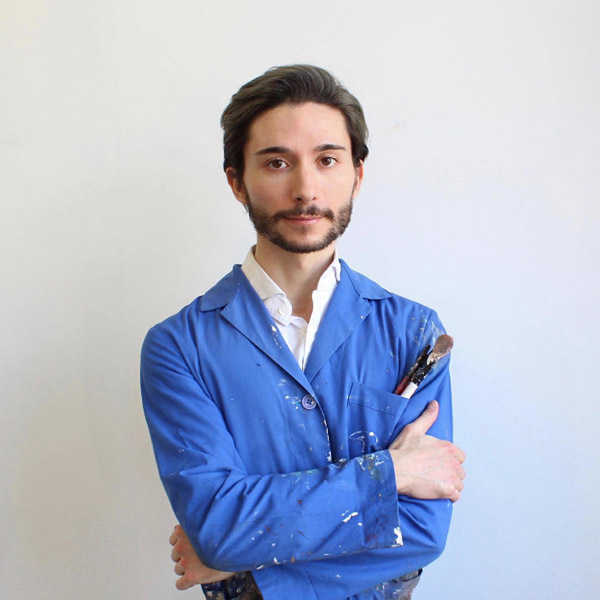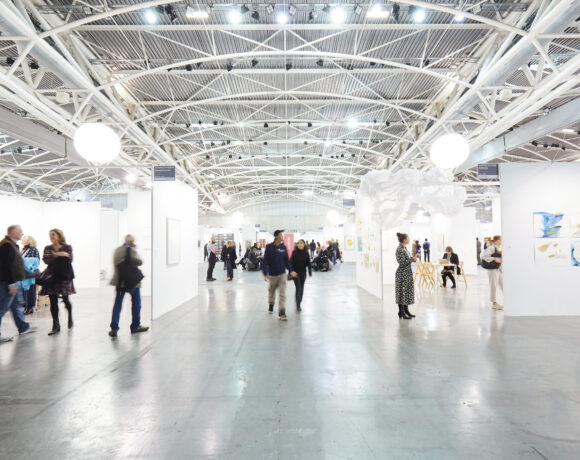ARCO Madrid art fair comes at its 37th edition, with an increase of five more galleries than in the previous year, hosted as usual in the fair spaces of IFEMA. This year, the event has at its core 209 galleries from 30 countries, with a stable presence of Spanish galleries – 67 – and a strong visibility, in line with the fair’s tradition, of art spaces from Latin America. 9 Italian galleries.
A change from previous editions is the increase of the presence of women artists, and a homage to Cuban-born artist Félix González-Torres, with installations throughout the city and art projects by sixteen artists, hosted at IFEMA. The main art fair of the country, open through Sunday 1st March, ARCO has been followed by the opening of satellite fairs in different locations, which today are more than ten. To name just a few, not to miss is Urvanity, dedicated to street and urban art; Hybrid, where artists and galleries installed in several rooms of a hotel, between Chamberí and Chueca; JustMad, hosted in the elegant interiors of Palacio Neptuno.
Exhibitions in private galleries, art foundations and museums are the corollary to the largest fairs. Reina Sofía has many temporary exhibitions: among them, Poetics of Democracy, on the social and cultural debate in Spain, right after the fall of Franco; Defiant Muses, an insight into feminist art collectives in France, during the ’70 and ‘80s; the solo painting shows by Jörg Immendorff and Ceija Stojka, the former focussing on postwar society in divided Germany, the latter on the (re)elaboration of the trauma of the Holocaust through images.
Outside the museum, it is still possible to visit the site-specific project by Hassan Khan, at Palacio de Cristal, also produced by Reina Sofía. Shows recently opened are a solo by Joan Jonas, at Tyssen-Bornemisza Art Contemporary; the Engels collection in Gran Sur, entirely devoted to Chilean art, at Sala Alcalà 31; the permanent art collection of Caixa Bank, with a recent installation of mainly paintings, and the show Vampires: the Evolution of the Myth. Both events are at Caixa Forum, a historic, fascinating building, newly redesigned by Herzog & de Meuron.
During its art week, Madrid becomes like a topic space, where interior and outer spaces seem to coincide: if ARCO dedicates a special attention to queer and feminist international artists, from Argentina to the States, from Luanda to Portugal, the galleries and art spaces throughout the city respond with diverse exhibitions of Latin-American artists. Many of them criticise the current status quo of the native countries of the artists. It is a transgenerational, choral, yet mixed debate, proposing a critique of the authoritarian drift of several countries, from Brazil to Venezuela, from Chile to Bolivia.
Among the many galleries and nonprofit spaces, worthy of mention are OTR art space, at Atocha; Casa do Brasil, at Moncloa; the group show of video art and performance Corpo brasileiro, at Storm and Drunk.
For a complete overview of the events at the main art fair, we recommend ARCO’s website: https://www.ifema.es/en/arco-madrid, and, for all other events throughout the city, the website of Arte Madrid: https://www.artemadrid.com/.
Elio Ticca
 Palacio de Cristal, Madrid. Photo Joaquín Cortés Roman Lores. Courtesy © Museo Reina Sofía
Palacio de Cristal, Madrid. Photo Joaquín Cortés Roman Lores. Courtesy © Museo Reina Sofía
 ARCO Madrid 2020. Courtesy © ARCO Madrid
ARCO Madrid 2020. Courtesy © ARCO Madrid
 Andressa Cantergiani, Combate, 2018. Still from video. Storm and Drunk, Corpo Brasileiro. Courtesy Hošek Contemporary
Andressa Cantergiani, Combate, 2018. Still from video. Storm and Drunk, Corpo Brasileiro. Courtesy Hošek Contemporary
 Yves Scherer, The Brightest Day, 2019. Lenticular Prints. Courtesy @ Gallleriapiù
Yves Scherer, The Brightest Day, 2019. Lenticular Prints. Courtesy @ Gallleriapiù
 Centro Reina Sofía, Edificio Nouvel. Photo Joaquín Cortès_Roman Lores. Courtesy © Centro Reina Sofia copia
Centro Reina Sofía, Edificio Nouvel. Photo Joaquín Cortès_Roman Lores. Courtesy © Centro Reina Sofia copia

Elio Ticca (Nuoro, Italy, 1988) is a visual artist and author. Graduated in visual arts and history of art, is a freelance contributor of Juliet Art Magazine, and other publications. He lives and works in Brussels.






NO COMMENT